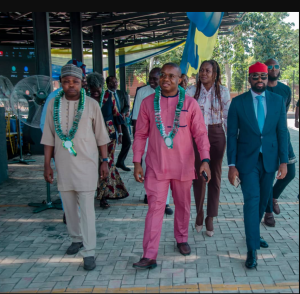

Jeehae Fischer
Each year, as we step into Women’s History Month, philanthropy around issues of gender, including women and gender nonconforming people, comes sharply into focus. We read pieces and release data about shrinking funding and interventions, and then, more or less, move on until the next calendar milestone reminds us to pay heed.
As The Collective, a New York-based group of BIPOC women organizers and leaders of some of the country’s most influential and culturally specific nonprofits, we want to call attention to the need for philanthropic interventions from the community that last beyond just one month and from donors who also are not just women themselves.
Funding for gender justice needs to come from all genders
In response to the #MeToo movement in 2017, philanthropic interventions to support women and girls increased relative to overall charitable giving, but they still account for a miniscule 1.6%. Philanthropic support for women and girls of color is even lower at a dismal 0.5%, whereas funding for trans communities was reported at a tiny 0.015% in the last decade.
Even as philanthropists like Melinda French Gates and MacKenzie Scott focus their philanthropy on gender justice organizations led by women, minorities and LGBTQIA+ individuals, the calamitous end of funding from the NoVo Foundation, which accounted for 96% of funding for gendered violence prevention in the U.S., highlights the pitfalls of relying on the support of a few donors and shows the critical need for diverse funders in this space. It’s no surprise that, with the end of the NoVo Foundation’s funding, the biggest grantmakers left in this space are women. This needs to change.
Beyond the need for more numerous and diverse donors, giving for women and gender nonconforming people also needs to encompass many more areas. Gender-based violence, for instance, which disproportionately affects women and gender nonconforming people, needs critical philanthropic attention, especially in the light of recent changes in gun laws in the United States.
Earlier in February, the Supreme Court ruled that individuals under domestic violence orders will be able to carry guns, stating that a federal law that barred those individuals from carrying firearms was unconstitutional. The Atlantic declared frankly that “it was going to get women killed.” This recent repeal could have catastrophically dangerous consequences for individuals who experience gender-based violence. Twenty people are abused by their partners every single minute in the United States, and when a male abuser has access to a firearm, the risk that he will choose to shoot and kill a female partner increases by 1,000%.
Grants that focus on gender-based violence can no longer be viewed through the narrow prism of “women’s issues.” Violence against women and gender nonconforming people can just as easily turn into a wider public safety issue, as we have seen with recent mass shootings in which, in more than 60% of cases, the shooters had previous records of domestic killings and/or intimate partner violence. Government interventions have repeatedly failed us, whether it is their inability to remove guns or to protect women and gender nonconforming folks — as seen through the decades-long implications of the Violence Against Women Act (VAWA).
Trust community-based organizations that serve people of color to do their job
In the ever-shrinking space of philanthropic support to address gender-based violence, there is little doubt that organizations supporting women and gender nonconforming folks of color face even greater barriers to funding. These organizations often operate at the intersection of race and gender and often simultaneously enlist multiple strategies in their work — service delivery, advocacy and community organizing. Many have reported that they do not see foundations supporting the populations they serve.
Grants that focus on a single-issue strategy or fail to explicitly mention their interest in supporting women and girls of color in their public-facing documents often end up failing to reach organizations that prioritize those populations, even if the funders involved claim to do so. Organizations founded by women and girls of color are also less likely to receive government funding than those not founded by women and girls of color (60.7% vs. 84.1%)
At The Collective, we know our communities can thrive when funders are willing to trust our leadership, but true trust means unrestricted investments and real partnerships; we need more than momentary responses to calls for anti-racism that give way to the next big newsbreak. In particular, we believe funders urgently need to start paying attention to the critically escalating problem of gender-based violence, which, without intervention from funders, is only bound to get worse. Here are a few ways funders could improve their response:
- Focus on organizations led by women, transgender and nonbinary people.
- Be transparent about the amounts you allocate to leadership of color and create strategies to reach out to organizations that target them.
- Provide flexible funding.
- Connect us to your philanthropic community and spread the word about our work.
- Provide multiyear grants to sustain our communities without requiring breaks in funding and/or annual competitive processes.
Better philanthropy is critical when federal policies fail
As bad as gender-based violence is across the board, the situation is even worse for individuals of color, who suffer disproportionately from the inadequacy of government’s measures to prevent it. Black women are three times more likely and American Indian/Alaskan Native women four times more likely to be shot by their partners compared to white women. Four in 10 homicides against Latinx women are a result of gender-based violence by an intimate partner, and a gun is used in 60% of those cases. Among South Asians in the U.S., 50% of the individuals lost to gender-based violence in 2022 died due to gun violence or homicide. However, those numbers could be vastly underreported since Asian American women face significant cultural barriers in reporting domestic and intimate partner violence.
Black women and other marginalized people also face a greater risk of being incarcerated, especially when seeking help during instances of gender-based violence. In a New York City-based study of survivors of gender-based violence who had been arrested along with their abusers (dual-arrest cases) or arrested as a result of a complaint lodged by their abuser (retaliatory arrest cases), 66% were African American or Latinx, 43% were living below the poverty line and 19% were receiving public assistance at the time. Undocumented women are also less prone to rely on law enforcement in cases of domestic violence and sexual assault due to the increased likelihood of their deportation under VAWA’s mandatory arrest policies.
Similar fears of abuse by law enforcement hold back trans women from reporting their abuse — 1 in 5 trans people report facing harassment from police (with much higher rates for trans women of color). Advocates and survivors alike report that once a transgender woman’s gender identity is discovered by law enforcement officers or disclosed to them by an abuser, she is treated as if she has deceived the police and often subjected to verbal abuse, arrest and violence.
Even domestic shelters meant to rehabilitate survivors are far from safe havens. Arab American and Muslim women are routinely turned away for their assumed “potential to create trouble with the police” due to stereotypical and racist assumptions regarding their ethnic identity.
In the light of a colossal breakdown of federal policies to protect individuals of color from gender-based violence, it is crucial for funders to facilitate solutions that center survivors and enable them to move away from their abusers in the first place. The lack of such support became especially evident during the COVID-19 lockdowns, when survivors were forced into close and constant contact with their abusers, leading to a jump in domestic violence cases from 25% to 33% globally. In 2021, the U.N. declared gender-based and intimate partner violence a “shadow pandemic” and stated that violence against women had increased to unprecedented levels. Calls to domestic violence help lines for Asian American women increased by at least 45% at some points during the pandemic, highlighting a worrying statistic in which 55% of Asian American women report experiencing abuse during their lifetimes.
We may be moving past the COVID crisis, but the crisis of gender-based violence continues to escalate. Women, trans and nonbinary people are losing battles for bodily autonomy and freedom from violence, especially gun violence. We need robust and informed philanthropic partnerships if we are going to correct this course and work toward a just future for gender justice and communities of color.












Wow Thanks for this write-up i find it hard to locate smart advice out there when it comes to this blog posts thank for the guide site